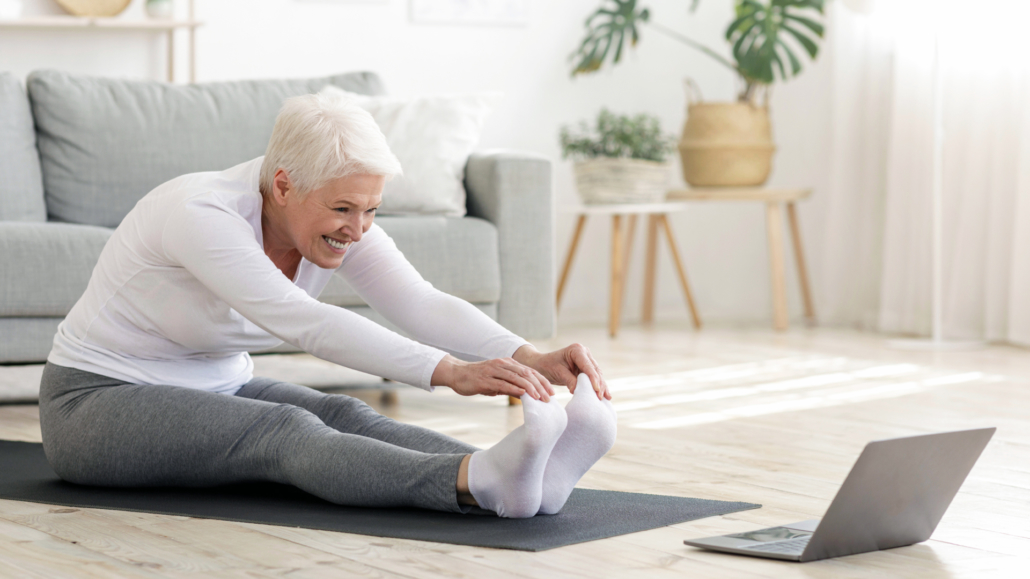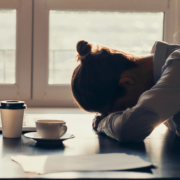How (and How Not) to Exercise When Recovering from an Illness
Staying physically active is a vital component of a healthy lifestyle. However, type, intensity, duration, and frequency of exercise are not a one-size-fits-all model. In health and healing, the way we engage in exercise is a personal matter that depends on uniquely individual factors. As much as regular exercise can be a positive, it can also be a negative, especially when the body is recovering from an illness.
Healing Is Hard Work
Recovering from an illness is an energy-intensive process on a cellular level. Thousands of chemical and biological reactions occur around the clock to help you heal from disease. You have millions of microscopic miracle workers operating nonstop to return the body to a state of health (synonymous with homeostasis). These involuntary and automatic processes require a lot of energy and benefit from our conscious support (proper nutrition, sufficient hydration, plenty of rest, positive mindset, etc.).
Exercising when recovering from an illness is a bit of a controversial subject, but the controversy lies mainly in discrepancies over how and how not to engage in physical activity when your body is healing. Moving your body is necessary to avoid atrophy of the muscles and to aid in digestion and circulation. Too much physical activity (for you and in your current state) can deplete energy levels and trigger symptoms of post-exertional malaise (PEM).
So, where do you draw the line? How do you know what is best for you on your unique healing journey? First, let’s look at the problems with exercise and healing and then at the solutions.
What Is Post-Exertional Malaise (PEM)
While post-exertional malaise is a key (complex) symptom in encephalomyelitis/chronic fatigue syndrome and long Covid, it is not exclusive to these two conditions. As defined in the Journal of Chronic Fatigue Syndrome, “PEM has been described as a cluster of symptoms following mental or physical exertion, often involving the loss of physical and mental stamina, rapid muscle or cognitive fatigability, and sometimes lasting 24 hours or more.”
The onset of PEM often occurs hours after the trigger making it difficult to identify the over-exertion. A trigger can be the simplest everyday activity, such as having a conversation, taking a shower, or working in your garden. The defining characteristic of PEM is that the severity of symptoms (such as debilitating fatigue, body pain, muscle weakness, and cognitive dysfunction) is not in proportion to the activity that triggered it. Walking your dog around the neighborhood shouldn’t cause you to be bedridden for two days. PEM can manifest as a symptom of chronic disease when the body is healing from illness.
More Harm Than Healing
We live in an exertion-oriented society. We push our emotional and physical bodies to the edge regularly without allowing ample time for rest and recovery. For those of us in optimal health (45% of Americans suffer from at least one chronic disease), we seem to be able to endure these high-intensity lives for some time, but unchecked stress, sleep deprivation, and poor diets catch up with everyone at some point, even those who don’t have any major underlying health conditions.
Exercise has long been pitched as the anecdote—the cure-all for stress, anxiety, and insomnia and a necessity for heart health and weight management. Light exercise is even encouraged for those on the mend from disease by many physicians to avoid deconditioning, a decline in physical function of the body because of physical inactivity. While regular physical activity is undoubtedly part of a healthy lifestyle, the benefits of exercise are not universally extended to everyone all the time.
Stress is a stimulus that affects the body’s ability to maintain homeostasis. While we might think of stress mainly as psychological, sickness and exercise cause stress on a physiological level. Prolonged stress can affect immune function and increase the probability of illness and injury. When the body is healing from disease, adding additional stress can compromise healing time and divert away vital energy needed for optimizing our natural healing processes.
4 Ways to Exercise When Recovering from an Illness
Exercise is not synonymous with high impact as much as it is commercially promoted that way (high-intensity interval training, CrossFit). While this approach to fitness might seem like all the rage these days, going too hard and too often has been scrutinized for being counterproductive and even potentially harmful to one’s health. When recovering from an illness, exercise should not be done at the expense of healing. Fortunately, there are several approaches to staying active that don’t involve over-exertion and an over-expenditure of energy.
Working In Versus Working Out
Paul Chek developed the concept of “working in versus working out” as a counterapproach to the traditional way we think about exercise. Working in works to restore energy balance, boost vitality, calm the sympathetic nervous system (fight or flight), activate the parasympathetic nervous system (rest and digest), and promote circulation without leaving you feeling depleted. Working in-type exercises include yin yoga, Tai Chi, meditation, and stretching. These types of exercise do not cause stress on the body and therefore do not require recovery.
Mindful Movement
Mindful movement supports checking in with our bodies and moving in a way that can help us alleviate stress, free stagnant energy, and fortify our mind-body connection. The main focus of mindful movement is to bring our full attention to the present moment and to experience our breath and body in the here and now.
Any movement can be made mindful, but when we are healing, the best movements are gentle ones. Breathwork, walking meditation, slow yoga, and Qigong are all forms of mindful movements that are easy on your body. Reestablishing the mind-body connection, which is sometimes lost or disrupted in a disease state, is integral to healing and regaining balance.
Incremental Training
The healing process is incremental, and as you move along that journey, aligning the type and intensity of the physical activity you do is an approach that will help reduce over-exertion, injury, and setbacks. Incremental training is a method that involves slowly increasing the intensity of the exercise over time and as the body is ready for those increases.
This holistic and gentle approach to reintegrating exercise into your life as you heal requires listening to your body, acknowledging your limits, allowing ample rest between and after, and just taking it slow. As you heal, you can incrementally work your way back to the exercise level best suited for your personal goals.
Anti-glycolytic Training
If you are at a point in your healing where you feel relatively rested and energized and want to return to strength and endurance training, Paval Tsatsouline makes a strong case for anti-glycolytic training in place of traditional glycolytic training like HIIT. The problem with glycolytic training, which involves high-intensity reps with short rest periods in between, is that a lot of metabolic waste is produced. The byproduct, lactic acid, of this type of exercise is responsible for that fiery burn in your muscles, which requires a lot of energy afterward for repair and recovery.
On the other hand, anti-glycolytic training involves much shorter reps that stop before the burn occurs and more extended rest periods in between. For example, 10 to 15 seconds of activity (kettlebell swings, for example) followed by 45 to 50 seconds of rest. Instead of training to tolerate more lactic acid, this training style produces less of it and, in turn, less muscle recovery energy and time. The catchphrase here is “less is more.”

Embrace Non-linear Healing
As much as we would like the healing process to be linear, it is often not. There are days when we feel like we are making progress, followed by days when we feel like we are going backward. This non-linear progression can also occur when incorporating exercise back into your life. To be active and heal will come with easy days and challenging days. The key is to recognize that and realize that it is okay; it is all part of the journey. There is no gain in pushing yourself beyond what your body is ready for. Be mindful, be slow, be incremental, and work in to work out.
Disclaimer: The statements made in this article have not been evaluated by the Food and Drug Administration. Any products or treatments mentioned are not intended to diagnose, treat, cure, or prevent any disease. Please consult a licensed medical practitioner for medical advice.
At Innovative Medicine, we believe in transparency. We want you to know that we may participate in affiliate advertising programs pertaining to products mentioned herein.
See how we can help you restore complete health of body, mind & spirit.
Join our mailing list and receive exclusive offers + information!







Leave a Reply
Want to join the discussion?Feel free to contribute!